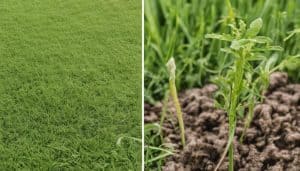You can expect visible results from Roundup in as little as 2 to 4 days, with complete weed control typically achieved within 1 to 2 weeks. However, the effectiveness of Roundup depends on three key factors: the root depth of the target plant, soil composition, and weather conditions. For instance, younger weeds may respond faster to Roundup compared to mature ones. By understanding these factors, you can optimize your Roundup application for maximum results. Want to get the most out of your weed control efforts? There's more to explore on the impact of these factors on Roundup's effectiveness.
Key Takeaways
• Visible effects on weeds appear within 2 to 4 days of Roundup application, with wilting, yellowing, or signs of distress.
• Complete weed control can be achieved in 1 to 2 weeks, depending on environmental factors and weed type.
• Root depth, soil composition, and weather conditions influence Roundup's effectiveness and speed.
• Weeds in the active growth phase are more susceptible to Roundup, making spring and fall ideal seasons for application.
• Younger weeds tend to respond faster to Roundup compared to mature ones, requiring less time to achieve control.
Understanding Glyphosate Absorption
When you apply Roundup to a weed, the glyphosate is quickly absorbed into the plant's leaves, initiating a process that ultimately leads to its demise. This rapid glyphosate absorption is essential for Roundup's effectiveness as a weed killer.
Once absorbed, the glyphosate moves through the plant's vascular system, targeting the plant's growth system and disrupting its ability to function. This systemic action of glyphosate within the plant is what makes Roundup an effective weed killer.
As the glyphosate spreads, it prevents the weed from growing and thriving, ultimately leading to its death. The efficiency of glyphosate absorption is key to Roundup's success, allowing it to penetrate deep into the plant's system and take control.
Direct Leaf Application Matters
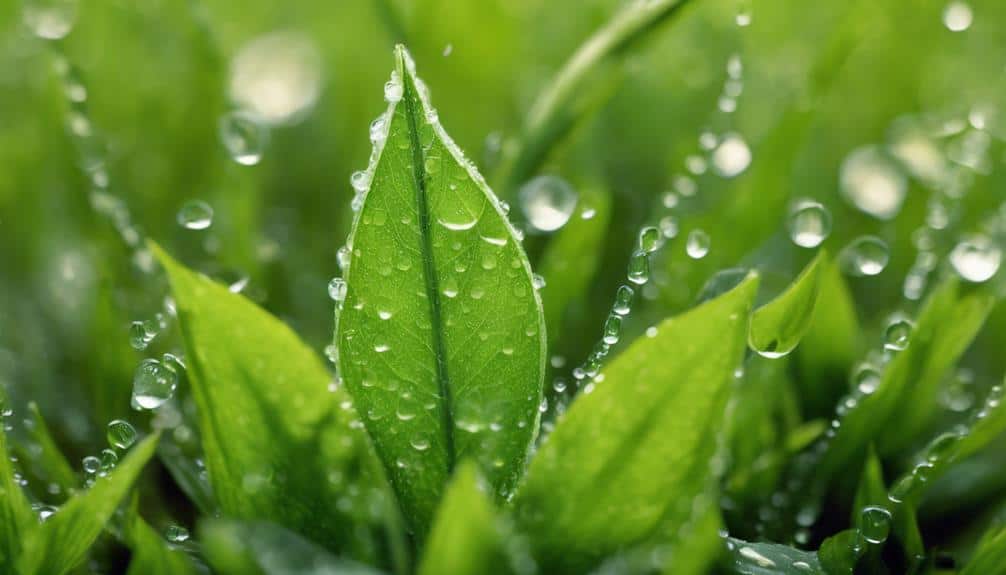
When you apply Roundup directly to the leaves, you're ensuring the glyphosate is absorbed effectively, which is vital for the herbicide to work efficiently.
As you consider direct leaf application, you'll want to keep in mind that timing, leaf size, and concentration all play a role in achieving best results.
Timing Is Everything
Proper timing is vital in ensuring the effectiveness of Roundup, as the herbicide relies heavily on direct leaf application to penetrate the weed's foliage and initiate its deadly action.
When you apply Roundup directly to the leaves, you're allowing the glyphosate to be absorbed and transported to the roots, ultimately killing the weed from within. The timing of this application is essential, as it affects how quickly you'll see visible effects.
Typically, you can expect to see the first signs of weed control within 2 to 4 days of direct leaf application. This is because the herbicide needs time to be absorbed through the leaves and take effect.
Leaves play a key role in Roundup's action, facilitating the absorption of the herbicide for effective weed control. By applying Roundup at the right time, you're ensuring that the glyphosate is absorbed quickly and efficiently, leading to faster visible effects and better overall results.
With proper timing, you can expect to see significant weed control in a matter of days.
Leaf Size Matters
As you apply Roundup directly to the leaves, you'll find that the size of those leaves plays a significant role in how efficiently the herbicide is absorbed, ultimately impacting the speed at which you'll see results. Larger leaves allow for more glyphosate absorption, leading to faster weed control. This is because the active ingredient in Roundup, glyphosate, moves through the plant's sap, ultimately causing weed death.
| Leaf Size | Absorption Rate | Weed Control Speed |
|---|---|---|
| Small | Slow | Slow |
| Medium | Moderate | Moderate |
| Large | Fast | Fast |
Direct leaf application ensures efficient distribution of glyphosate throughout the plant, making it vital for effective weed control. By targeting the leaves, you're allowing the herbicide to penetrate the plant's system, leading to quicker results. Remember, the key to successful weed control with Roundup is ensuring proper application on the plant's leaves. By considering leaf size, you'll be able to optimize your weed control strategy and achieve faster results.
Concentration Counts
You'll get the best results from Roundup by applying the right concentration directly to the weed's leaves, which allows the glyphosate to penetrate the plant efficiently.
This direct leaf application is important for maximizing Roundup's weed-killing capabilities.
The concentration of Roundup you use matters greatly, as higher concentrations lead to quicker and more effective weed control.
When you apply a concentrated solution directly to the leaves, the active ingredient, glyphosate, can penetrate the plant more effectively.
This results in faster and more efficient weed control.
Remember, the key is to make sure the glyphosate is absorbed efficiently by the weed, and that's where concentration comes in.
By using the right concentration, you can be confident that the glyphosate will penetrate the plant efficiently, leading to excellent weed control.
Don't compromise on concentration – it's the key to getting the best results from Roundup.
Weed Size and Age Affect Results
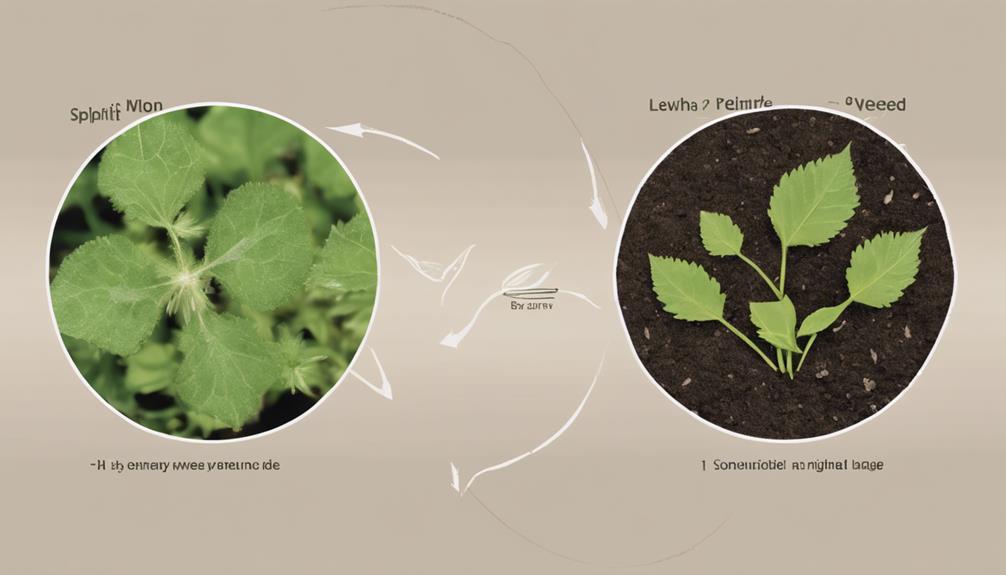
The size and age of weeds have a significant impact on how quickly Roundup takes effect, with younger and smaller weeds typically succumbing to the herbicide faster than their mature and larger counterparts. As you apply Roundup, you'll notice that smaller weeds start wilting and dying off within a few days, whereas larger, more established weeds may take up to 2 weeks or more to completely die. This is because well-established weeds with deep roots require more time and effort to eliminate.
The age of weeds plays an essential role in determining how long it takes for Roundup to fully eliminate them. You'll find that younger weeds, which have smaller roots and less developed systems, are more susceptible to Roundup's effects. On the other hand, larger, more established weeds have extensive root systems, making them more resistant to the herbicide.
Understanding the impact of weed size and age on Roundup's effectiveness will help you adjust your application strategy and optimize your weed control results.
Environmental Conditions Impact

Environmental conditions, including temperature and sunlight, play a significant role in determining how quickly Roundup takes effect on weeds. You'll get the best results when you apply Roundup in ideal temperatures between 60-75°F, with active plant growth, which guarantees effective herbicide absorption.
However, cold and wet weather can slow down herbicide absorption and translocation, hindering the effectiveness of Roundup.
When you apply Roundup, you should also consider sunlight exposure. Adequate sunlight promotes healthy plant growth, making it easier for the herbicide to take effect. On the other hand, frost post-application may impact the results of Roundup on weeds. It's crucial to avoid severe frost immediately after applying Roundup for best efficacy.
Factors Influencing Herbicide Movement
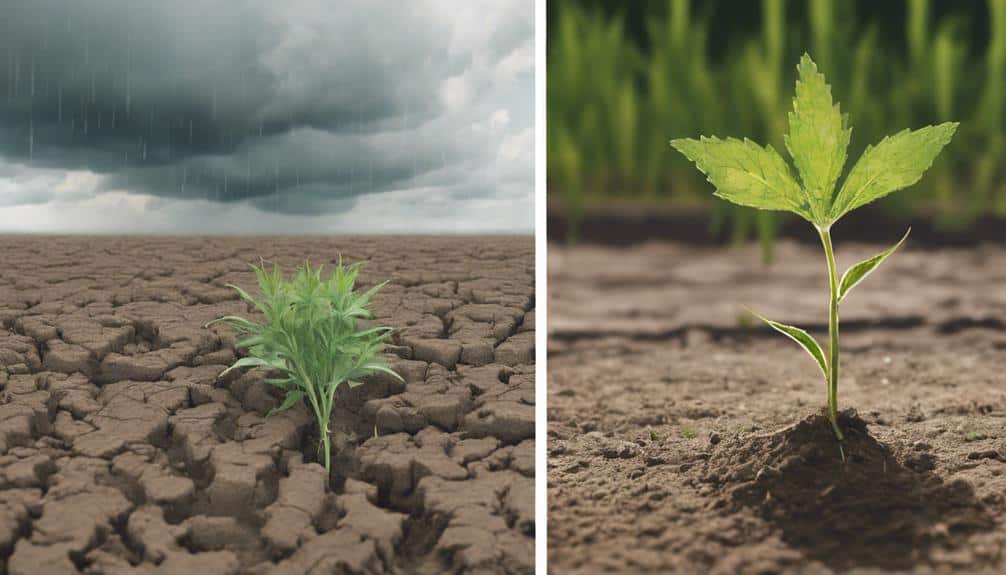
When you consider the factors influencing herbicide movement, you'll find that soil pH levels and root system depth are critical aspects to examine.
Soil pH, in particular, affects the solubility and availability of the herbicide, while the root system's depth influences the herbicide's ability to reach its target.
Soil Ph Levels
By understanding how soil pH levels affect glyphosate's movement and effectiveness, you can optimize its performance.
Soil pH levels play an essential role in herbicide movement and availability. Neutral to slightly acidic pH levels, ranging from 6 to 7, are ideal for glyphosate absorption and activity. This ideal pH range allows for efficient herbicide movement, ensuring effective weed control.
On the other hand, alkaline soils with pH levels above 7 may reduce glyphosate's effectiveness, hindering its ability to control weeds. Testing soil pH levels helps determine the best conditions for herbicide performance.
By doing so, you can adjust your application strategy to maximize glyphosate's effectiveness. Remember, understanding soil pH levels is key to achieving excellent herbicide performance.
With the right pH conditions, you can ensure glyphosate is absorbed efficiently, leading to better weed control and reduced reapplication rates.
Root System Depth
The depth of a plant's root system plays a critical role in determining how quickly Roundup is transported through the plant, with deeper roots potentially delaying the herbicide's reach to the entire plant.
Plants with deeper roots may require more time for the herbicide to reach and kill the entire plant. On the other hand, plants with shallow root systems may show visible effects of Roundup quicker than those with deep roots.
Understanding the root depth of the target plant helps predict the time it takes for Roundup to work effectively.
As you consider using Roundup, keep in mind that factors like soil composition and plant species can also impact the movement of Roundup through the root system. Certain soil compositions can slow down or speed up herbicide movement, affecting Roundup's effectiveness.
Timeframe for Visible Results

After applying Roundup, you can expect to start seeing visible effects on weeds within a relatively short timeframe. Typically, you'll notice the weed killer works its magic within 2 to 4 days of application. During this time, the glyphosate herbicides in Roundup begin to take hold, moving systematically throughout the plant to provide thorough control.
You may observe weeds starting to wilt, turn yellow, or show other signs of distress as the herbicide works its way through the plant's system.
The time it takes for Roundup to work effectively can vary depending on factors like weather conditions and the type of weed. For instance, younger weeds may succumb faster to Roundup compared to mature ones. In ideal conditions, you can expect complete weed control within 1 to 2 weeks, at which point the plant will have died off entirely.
Keep in mind that Roundup's effectiveness can be influenced by environmental factors, so be patient and monitor the treated area closely to achieve the best outcomes.
Can Roundup Work Quickly If Applied at 2:30 PM?
When estimating time till 2:30, Roundup typically works more effectively if applied earlier in the day when temperatures are cooler and the weed is actively growing. Applying Roundup at 2:30 PM may not provide optimal results as the heat and sunlight can affect its effectiveness.
Optimal Application Timing
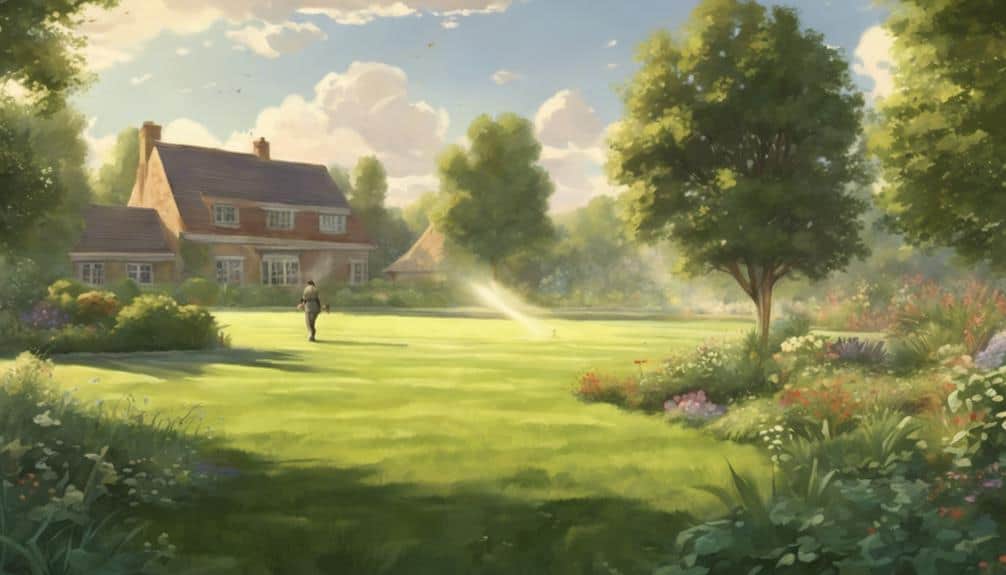
To achieve best results with Roundup, you should apply it during the active growth phase of weeds, when they're most susceptible to the herbicide's effects. This is typically during the spring and fall when weeds are actively growing. Timing is essential for Roundup to work effectively on weeds, and applying it during this phase can lead to faster and more efficient results.
For best application timing, keep the following factors in mind:
- Apply Roundup on calm, dry days to guarantee absorption and efficient results.
- Avoid applying Roundup during windy or rainy days, as this can reduce its effectiveness.
- Opt for application during the active growth phase, when weeds are most vulnerable to the herbicide's effects.
Maximizing Weed Killer Efficacy
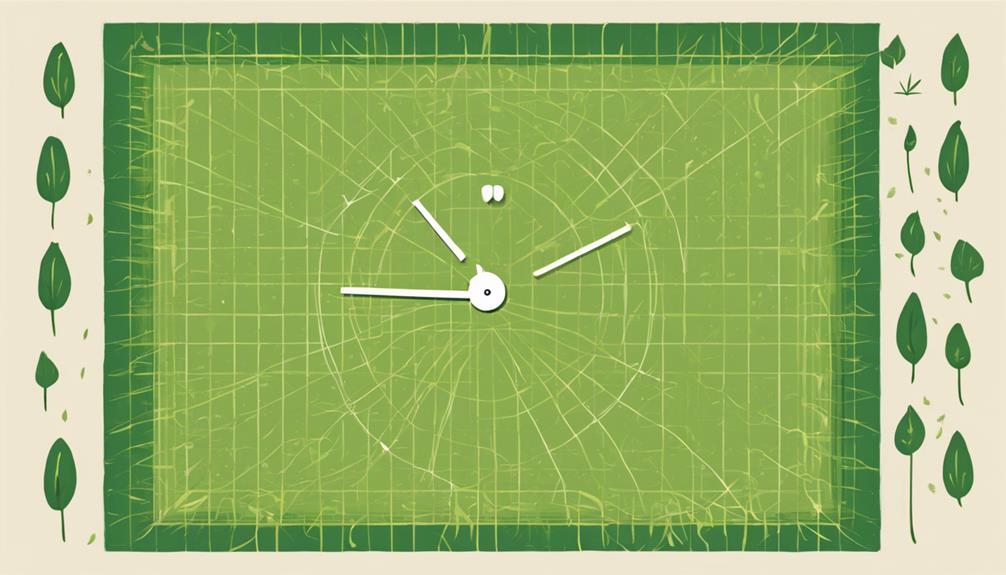
By applying Roundup during the ideal growth phase, you've set the stage for effective weed control, and now it's time to maximize the herbicide's efficacy by understanding how it works and the factors influencing its performance.
To take full advantage of Roundup, it's important to bear in mind that herbicides are absorbed through the leaves and transported to the roots for systemic eradication. This means you should focus on targeting the parts of the plant where absorption is most effective.
| Weed Killer Factor | Influence on Efficacy |
|---|---|
| Weather Conditions | Slows down or accelerates herbicide absorption |
| Type of Weed | Affects the rate of herbicide uptake and translocation |
| Application Timing | Impacts the plant's growth phase and susceptibility |
| Herbicide Concentration | Determines the dose and speed of weed control |
When using Roundup, it's vital to take into account these factors to ensure best results.
Remember that different types of weed killers may have varying levels of efficacy depending on the specific weed species and environmental conditions.
Frequently Asked Questions
How Quickly Does Roundup Work?
You'll be surprised to know that Roundup can show visible effects on weeds in just 2 to 4 days!
But how quickly does it work, exactly? When you apply Roundup, it's absorbed through the plant's leaves and transported to the roots for systemic control. Factors like weather, weed type, and plant maturity influence the speed.
Generally, it takes up to 2 weeks for the plant to die off entirely.
How Long Does It Take for RM43 to Work?
You're wondering how long it takes for RM43 to work its magic. Typically, you'll start seeing visible effects on weeds within 2 to 4 days of application.
However, it may take up to 2 weeks for the plant to die off entirely. Factors like weather conditions and the type of weed being treated can influence the timeframe.
Why Isn't Roundup Killing My Weeds?
Imagine your weeds as a stubborn fortress, refusing to surrender to Roundup's potent formula. But why isn't it working?
You've applied it correctly, following the label instructions to the letter. Yet, the weeds persist. It's possible that weed resistance, improper application, or environmental conditions are the culprits.
Check if you've applied it during the plant's active growth phase, and make sure the weather conditions are ideal.
It's time to troubleshoot and adjust your strategy to breach that fortress.
How to Make Roundup Work Faster?
To make Roundup work faster, you'll want to apply it during the plant's active growth phase. Guarantee thorough coverage of the weed to expedite absorption.
Warmer and sunnier weather conditions will also speed up the process. Additionally, targeting younger weeds will yield faster results than tackling mature ones.

